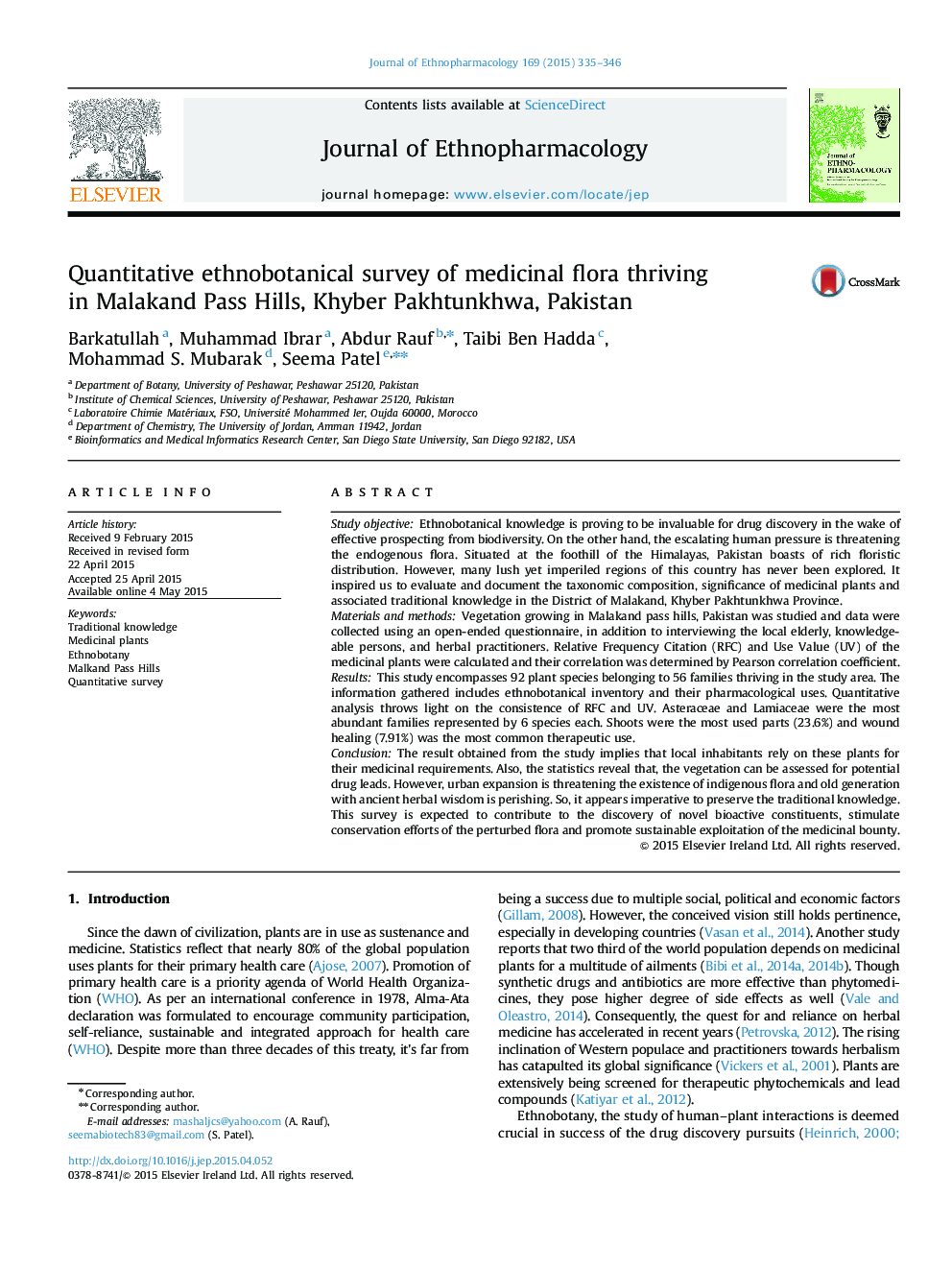| کد مقاله | کد نشریه | سال انتشار | مقاله انگلیسی | نسخه تمام متن |
|---|---|---|---|---|
| 2544997 | 1560393 | 2015 | 12 صفحه PDF | دانلود رایگان |
Study objectiveEthnobotanical knowledge is proving to be invaluable for drug discovery in the wake of effective prospecting from biodiversity. On the other hand, the escalating human pressure is threatening the endogenous flora. Situated at the foothill of the Himalayas, Pakistan boasts of rich floristic distribution. However, many lush yet imperiled regions of this country has never been explored. It inspired us to evaluate and document the taxonomic composition, significance of medicinal plants and associated traditional knowledge in the District of Malakand, Khyber Pakhtunkhwa Province.Materials and methodsVegetation growing in Malakand pass hills, Pakistan was studied and data were collected using an open-ended questionnaire, in addition to interviewing the local elderly, knowledgeable persons, and herbal practitioners. Relative Frequency Citation (RFC) and Use Value (UV) of the medicinal plants were calculated and their correlation was determined by Pearson correlation coefficient.ResultsThis study encompasses 92 plant species belonging to 56 families thriving in the study area. The information gathered includes ethnobotanical inventory and their pharmacological uses. Quantitative analysis throws light on the consistence of RFC and UV. Asteraceae and Lamiaceae were the most abundant families represented by 6 species each. Shoots were the most used parts (23.6%) and wound healing (7.91%) was the most common therapeutic use.ConclusionThe result obtained from the study implies that local inhabitants rely on these plants for their medicinal requirements. Also, the statistics reveal that, the vegetation can be assessed for potential drug leads. However, urban expansion is threatening the existence of indigenous flora and old generation with ancient herbal wisdom is perishing. So, it appears imperative to preserve the traditional knowledge. This survey is expected to contribute to the discovery of novel bioactive constituents, stimulate conservation efforts of the perturbed flora and promote sustainable exploitation of the medicinal bounty.
Figure optionsDownload high-quality image (444 K)Download as PowerPoint slide
Journal: Journal of Ethnopharmacology - Volume 169, 1 July 2015, Pages 335–346
